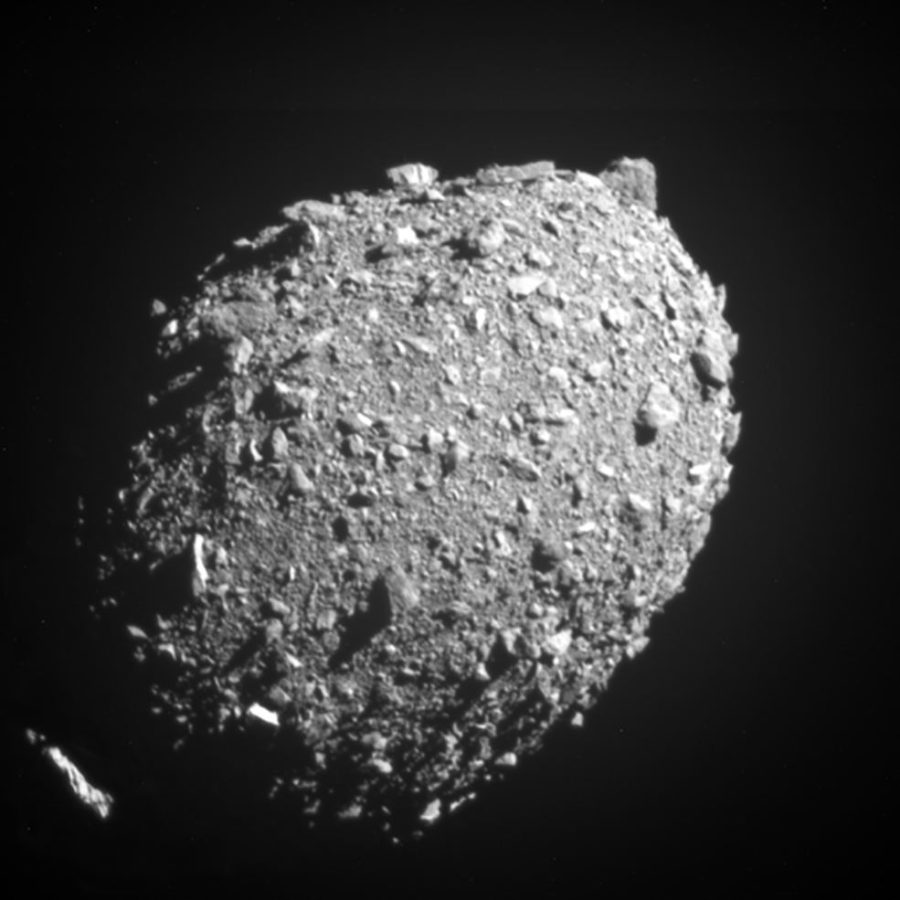DART Spacecraft: The Future of Planetary Defense
An image of Dimorphos taken by the DART Spacecraft.
On September 26, 2022, NASA’s DART spacecraft became the first spacecraft to successfully change the path of an asteroid. The mission’s success revealed a new future for planetary defense — using the technology behind the DART spacecraft to protect our planet against asteroids that are on course to enter our atmosphere.
NASA launched the DART (Double Asteroid Redirection Test) Spacecraft in November of 2021 to adjust the orbit of Dimorphos, an asteroid orbiting another larger asteroid called Didymos. These two asteroids are part of the Amor group (a.k.a. Earth-grazing asteroids), which orbit mostly between Earth and Mars. The DART spacecraft physically crashed into Dimorphos to adjust its orbit time around Didymos, successfully shortening it by about 32 minutes. Neither asteroid posed any harm to Earth, but this test showed that if another asteroid were to be on track to collide with Earth, DART could be prepared to adjust its orbit as well.
The DART spacecraft used only one instrument, the DRACO (Didymus Reconnaissance and Asteroid Camera for Optical Navigation). The DRACO aided in navigation as well as providing images and data of the asteroid. The spacecraft also carried the LICIACube (Light Italian CubeSat for Imaging of Asteroids), a separate satellite developed by the Italian Space Agency that was ejected from the DART spacecraft in order to take images of the collision.
In the near future, missions similar to the DART Spacecraft could eventually provide a new form of planetary defense, which could eventually allow us to prevent mass extinction events induced by asteroids.

